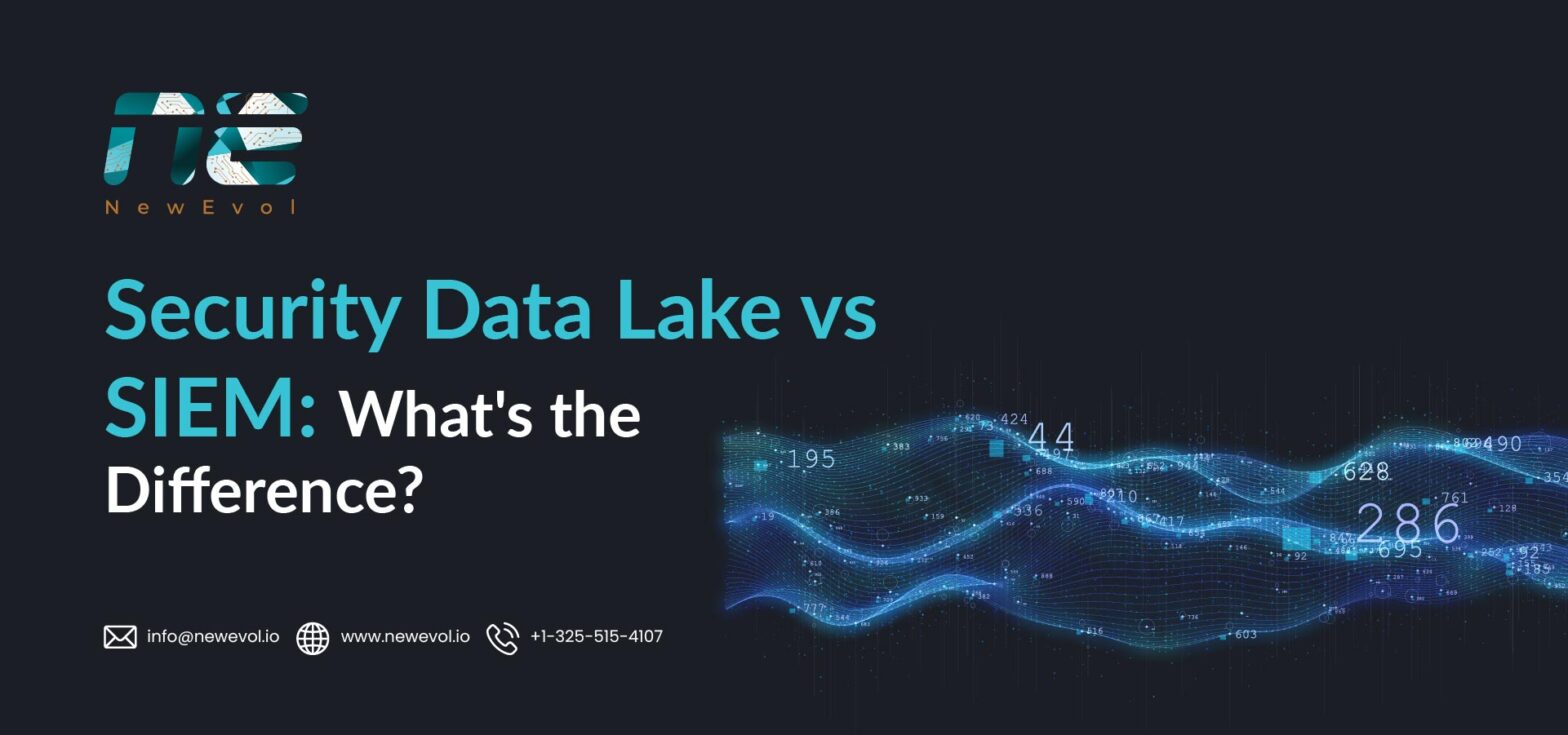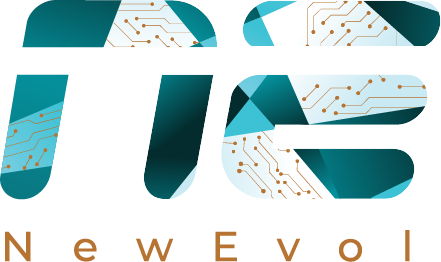Security Data Lake Solutions vs SIEM: What’s the Difference?

Every day, companies generate mountains of security data—logs from servers, alerts from firewalls, events from cloud apps, and more. Keeping track of it all and spotting threats can feel overwhelming. For years, Security Information and Event Management (SIEM) systems have been the standard tool to collect, organize, and alert teams about security issues. But as data grows and cloud adoption rises, SIEMs can struggle with scale, cost, and advanced analysis needs.
That’s where Security Data Lake Solutions (SDLs) come in. Unlike SIEMs, SDLs store all types of security data—big or small, structured or messy—at a large scale. This makes it easier for security teams to search through data, hunt for threats, and investigate incidents more thoroughly, without breaking the budget.
For US companies dealing with compliance requirements, cloud migration, and increasingly sophisticated cyberattacks, knowing the difference between a SIEM and a Security Data Lake Solutions is crucial. In this blog, we’ll break it down in simple terms, explain how each works, and help you figure out which approach fits your organization best.
What we mean by “SIEM” and “Security Data Lake Solutions”
Before diving into the differences, let’s clarify what we’re talking about.
SIEM (Security Information and Event Management) is a tool that collects security data from different sources—servers, network devices, applications—and organizes it in one place. It’s designed to help security teams spot suspicious activity, trigger alerts, and generate compliance reports. Think of it as a central hub that tells your team, “Hey, something unusual is happening here.” SIEMs are great for real-time monitoring and ensuring your organization meets regulatory requirements.
Security Data Lake Solutions (SDL), on the other hand, is like a massive storage system for all your security data—logs, events, and telemetry—whether it’s structured or messy, recent or old. Instead of focusing only on alerts, SDLs let teams store and analyze data at scale. This makes it easier to search for hidden threats, run advanced analytics, and investigate incidents that happened months ago. Unlike a SIEM, a Data Lake Solutions doesn’t try to make sense of the data immediately; it gives your security team the flexibility to explore and uncover insights over time.
In short, SIEM is about monitoring and alerting, while a Security Data Lake Solutions is about storing and analyzing all your security data to dig deeper when needed.
Core technical differences
Understanding how a SIEM and a Security Data Lake Solutions work under the hood helps clarify why organizations might choose one, the other, or both. Here’s a side-by-side look at the main technical differences:
-
Data Collection and Ingestion
- SIEM: Collects structured logs and events from servers, networks, applications, and endpoints. It normalizes this data so it’s easy to search and correlate.
- Security Data Lake Solutions: Can ingest everything—structured, semi-structured, or unstructured data—from almost any source. You can store huge volumes of raw data without worrying about strict formatting.
-
Storage and Retention
- SIEM: Designed for short-to-medium-term storage due to cost and performance limits. Long-term retention can get expensive.
- Security Data Lake Solutions: Built to handle massive volumes over long periods. Tiered storage options allow cost-efficient retention of years’ worth of data.
-
Analytics and Threat Detection
- SIEM: Excellent at real-time monitoring, correlation rules, and alerting. It’s ideal for detecting known patterns of attacks quickly.
- Security Data Lake Solutions: Focuses on deep analysis and historical investigations. Teams can run advanced analytics, machine learning, or custom queries to uncover hidden threats.
-
Query Speed and Flexibility
- SIEM: Optimized for fast searches and alerts on structured data, which is critical for immediate response.
- Security Data Lake Solutions: More flexible in the types of queries you can run but may require more time or compute resources for large datasets.
-
Cost and Operations
- SIEM: Costs scale with data ingestion and licenses. Often requires less in-house engineering because much of the functionality is pre-built.
- Security Data Lake Solutions: More cost-efficient at scale but requires engineering to parse, normalize, and analyze data effectively.
Business & security implications for US enterprises
For US companies, the choice between a SIEM and a Security Data Lake Solutions isn’t just technical—it has real business and security consequences. Here’s what leaders need to consider:
-
Compliance and Reporting
Many US industries—finance, healthcare, and retail—face strict regulations like HIPAA, PCI DSS, and SOX. SIEMs make compliance easier with pre-built reports and automated alerts. Security Data Lake Solutionss, while powerful, require more setup to meet regulatory reporting needs.
-
Threat Detection and Incident Response
SIEMs excel at spotting known threats in real-time, helping security teams respond quickly to attacks. Data Lake Solutionss give teams the ability to hunt for unknown threats and investigate incidents that happened months ago, which is critical for understanding complex breaches.
-
Cost Management
SIEMs charge based on the amount of data ingested and stored, which can become expensive as your organization grows. Security Data Lake Solutionss are typically more cost-efficient at scale because storage and compute can be managed separately, but they do require skilled engineering to extract actionable insights.
-
Cloud and Hybrid Environments
As US enterprises migrate to the cloud or adopt hybrid IT environments, Security Data Lake Solutionss handle diverse data sources more easily. They allow teams to centralize telemetry from cloud apps, SaaS platforms, and on-prem systems, while a SIEM might struggle with large volumes or varied formats.
-
Strategic Advantage
Organizations that combine both approaches often gain the most. A SIEM provides fast alerts for immediate threats, while a Data Lake Solutions enables deep analysis and threat hunting. Together, they strengthen security posture, improve response times, and provide a richer understanding of the enterprise threat landscape.
When to choose SIEM (use cases)
While Security Data Lake Solutionss offer scale and flexibility, SIEMs remain essential for many organizations—especially when fast detection, compliance, and structured monitoring are critical. Here are the scenarios where a SIEM makes the most sense:
-
Regulatory Compliance
If your company must meet strict US regulations like HIPAA, PCI DSS, SOX, or FINRA, SIEMs provide built-in reporting, audit trails, and alerts to satisfy compliance requirements without heavy customization.
-
Real-Time Threat Detection
SIEMs are optimized for detecting known attack patterns quickly. For security teams that need immediate alerts on suspicious activity, SIEMs are highly effective.
-
Smaller or Mid-Sized Environments
Organizations with moderate data volumes may find a SIEM more practical because it provides ready-to-use dashboards, correlation rules, and alerting without the need for large-scale engineering.
-
SOC-Centric Operations
Security Operations Centers (SOCs) that rely on predefined playbooks and incident response procedures benefit from SIEMs’ structured data, rapid alerting, and centralized management.
-
Predictable Data Sources
If your environment primarily consists of known, structured data sources (e.g., servers, firewalls, endpoints), SIEMs can efficiently collect, normalize, and analyze events without complex data engineering.
When to choose a Security Data Lake Solutions (use cases)
Security Data Lakes (SDLs) aren’t meant to replace SIEMs—they’re designed to complement them, especially in environments where scale, flexibility, and deep analysis are crucial. Here’s when a Security Data Lake makes sense:
-
Large or Growing Data Volumes
If your organization generates massive amounts of logs, cloud telemetry, or endpoint data, an SDL can store it all efficiently without the high costs associated with SIEM licensing.
-
Advanced Threat Hunting
SDLs let security teams dig deeper into historical and unstructured data, making it easier to identify unknown or sophisticated attacks that might not trigger a SIEM alert.
-
Cloud-Native and Hybrid Environments
Companies with multiple cloud platforms, SaaS applications, or hybrid setups benefit from SDLs’ ability to centralize and normalize diverse data sources.
-
Long-Term Forensics and Analysis
SDLs enable extended data retention, which is invaluable for investigating incidents that happened months or even years ago, helping organizations meet internal or regulatory auditing needs.
-
Flexible Analytics and Machine Learning
For teams looking to apply custom analytics, AI, or ML models, a Security Data Lake provides raw data at scale, allowing for sophisticated analysis beyond standard SIEM rules.
Hybrid approaches — the pragmatic middle path
Many organizations don’t have to choose strictly between a SIEM and a Security Data Lake—they can use both together to maximize security coverage. A hybrid approach combines the real-time alerting and compliance features of a SIEM with the scale and analytical power of a Security Data Lake.
In practice, this means the SIEM continues to monitor critical systems, trigger alerts, and generate compliance reports, while the Security Data Lake stores all security telemetry for deeper analysis and historical investigations. Teams can run advanced queries, threat hunting exercises, or machine learning models on the SDL, uncovering threats that a SIEM alone might miss.
This hybrid setup is particularly useful for US enterprises with large, cloud-based, or hybrid IT environments. It allows security teams to respond quickly to immediate threats while maintaining a rich repository of data for long-term insights. Essentially, the hybrid model delivers speed, scale, and flexibility, helping organizations strengthen security posture without compromising compliance or operational efficiency.
Common pitfalls & implementation risks
While Security Data Lakes and SIEMs offer powerful benefits, implementing them isn’t without challenges. Understanding common pitfalls can help US enterprises avoid costly mistakes:
1. Underestimating Engineering Effort
Security Data Lakes require skilled teams to parse, normalize, and maintain large volumes of data. Without proper resources, data can become messy, reducing its value for analysis.
2. Ignoring Data Quality and Governance
Collecting huge amounts of telemetry is not enough. Poor data quality, inconsistent formatting, or missing context can lead to inaccurate analytics and missed threats.
3. Overlooking Compliance Requirements
While SIEMs often have built-in compliance reports, SDLs require custom setups to meet regulatory standards. Neglecting this can lead to audit failures or gaps in reporting.
4. Poor Integration Between Tools
Using a SIEM and SDL together requires careful planning. If alerts, logs, and workflows aren’t integrated, security teams may face fragmented visibility and slower response times.
5. Lack of Clear Use Cases
Deploying these tools without defined objectives—whether alerting, hunting, or compliance—can result in wasted resources and low ROI. Organizations must clarify what problems they are solving before investing.
Practical migration checklist
Moving from a SIEM-only setup to a Security Data Lake—or adopting a hybrid model—can seem daunting. Here’s a step-by-step checklist to make the transition smoother and more effective:
1. Inventory Your Data Sources
Identify all logs, events, and telemetry across on-prem, cloud, and hybrid environments. Knowing what you have is the first step to effective migration.
2. Define Retention Policies
Decide how long different types of data need to be retained for compliance, forensics, or analytics purposes.
3. Assess Costs
Compare SIEM licensing, storage costs, and compute requirements for a Security Data Lake to understand the total cost of ownership.
4. Plan Data Parsing and Normalization
Determine how raw data will be structured for analysis. This ensures your analytics and threat hunting are accurate.
5. Map Detection Rules
Review existing SIEM alerts and decide which should remain in the SIEM and which can be moved or supplemented in the SDL.
6. Validate Analytics and Reporting
Test queries, dashboards, and compliance reports in the new setup to ensure visibility and accuracy.
7. Roll Out in Phases
Start with a pilot or select data sources before scaling to the entire environment. This reduces risk and allows for adjustments.
8. Update SOC Playbooks
Ensure security operations teams know how to use the new hybrid setup effectively. Provide training if needed.
9. Review Compliance and Audit Readiness
Make sure your SDL + SIEM approach meets regulatory requirements for reporting and data retention.
10. Monitor and Govern Continuously
Establish ongoing monitoring, maintenance, and governance processes to ensure long-term reliability and value.
How NewEvol helps
Implementing a Security Data Lake or hybrid SIEM + SDL environment can be complex, but NewEvol makes it simple. With Advisory Services, we design hybrid security setups tailored to your data volume and compliance needs. Our DataOps automates log ingestion and normalization, while Threat Intelligence & Analytics enables deep threat hunting and anomaly detection.
Using Cloud & Storage Optimization, we scale your data lake efficiently, and the Compliance Suite ensures HIPAA, PCI DSS, and SOX readiness. Finally, Managed Security Services support SOC operations, reducing administrative burden and keeping your security environment running smoothly.
Final Thoughts
Choosing between a SIEM and a Security Data Lake doesn’t have to be an either/or decision. SIEMs excel at real-time monitoring, alerting, and compliance, while Security Data Lakes shine in scalable storage, deep analytics, and advanced threat hunting. For most US enterprises, the smartest approach is a hybrid setup that leverages the strengths of both. By combining these tools thoughtfully, organizations can detect threats faster, investigate incidents more thoroughly, and manage costs effectively. And with the right guidance and support—like NewEvol’s expertise—enterprises can navigate the complexity of modern security operations without sacrificing compliance or operational efficiency. Investing in the right security infrastructure today prepares your organization not just for today’s threats, but for the challenges of tomorrow.
FAQs
-
What is the difference between SIEM and a Data Lake?
A SIEM collects, organizes, and alerts on structured security data in real time, focusing on compliance and fast detection. A Data Lake stores raw, large-scale telemetry from multiple sources, allowing for deep analysis and historical investigations.
-
What is the difference between SIEM and a Security Data Lake?
SIEMs are alert-driven and optimized for monitoring known threats, while Security Data Lakes store all types of security data at scale, enabling advanced threat hunting, analytics, and long-term forensics.
-
What is a Security Data Lake?
A Security Data Lake is a centralized repository for storing raw security data from various sources—structured or unstructured—at scale. It allows teams to run analytics, hunt for threats, and investigate incidents over long periods.
-
What is the difference between a Data Lake and a Security Data Lake?
A general Data Lake stores any type of enterprise data, while a Security Data Lake is specifically designed for security telemetry, with tools and structure optimized for threat detection, analytics, and compliance.

